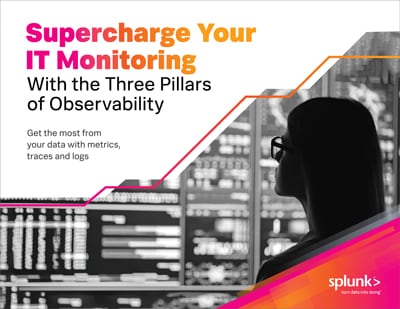Centralized Logging & Centralized Log Management (CLM)

Centralized logging provides visibility into the system by consolidating all the log data in a single all-in-one source. It supports two particular enterprise needs:
- Performing log analysis on a large scale.
- Monitoring system security.
Once all the data is ingested in a central location, you can seamlessly identify the problems in systems and troubleshoot them. But with ease comes challenges, too. For example, your team members may struggle with locating their desired details from this sea of data.
Let’s take a balanced look at the benefits and challenges associated with centralized log management (CLM). First, let’s answer an important question…
Why do logs matter?
By providing visibility, log data can help you to enhance reliability, improve performance, and fortify the security of your system's infrastructure. If anything goes wrong in your system, logs serve as a lifeline for quickly pinpointing and resolving those problems.

For example, think of logs as puzzle pieces, each with a part of the system's picture. Together, they will provide a comprehensive view of your system. Log data is key to understanding, maintaining, and securing your system.
Unstructured logs vs. structured logs
There are two types of logs: unstructured and structured. While unstructured are easy for humans to understand and difficult for machines to interpret, structured logs are the opposite. They contain key-value pairs in JSON format, which is easier for machines to process.
Machines understand and process critical queries related to your systems and products. And you gain the ability to interact effortlessly with the data they contain. You can also extract valuable insights, perform analyses, and troubleshoot issues efficiently.
(Read more about data structures.)
Explaining centralized logging
Centralized logging is a solution that can collect, ingest, and visualize data from customer applications or log sources, channeling it into a central location. Doing so ensures that logs are consolidated and not scattered across different locations like devices, servers, or routers.
You can also set up alerts based on predefined metrics (collection of log data distributed over time) within your logs. These alerts will notify you of specific events or unexpected anomalies in real-time — so you can respond rapidly to potential issues.
With centralized logging, you can easily share your dashboard and log data, whether collaborating with team members or sharing insights with stakeholders. That's how centralized logging streamlines data collection, alert generation, and sharing for better operational efficiency.
How does CLM work?
Centralized logging goes with CLM: Centralized log management is done in a 3-step process. Here's how:
Step 1. Collect log data
In the first phase, you gather logs from different sources — like operating systems, firewalls, servers, IDS or IPS. But in these sources, there's plenty of irrelevant and relevant data. So, to collect only valuable data, you prompt the logs for preprocessing and cleaning before collection.
Once data is preprocessed, the log collector reads data from log datasets and converts raw information into a usable format, storing them in structured data tables.
(Understand data normalization.)
Step 2. Ingest relevant data into a centralized source
Now that data is collected, it's then ingested into a centralized source from event logs. Event logs are categorized into the following types to classify the importance of events:
- Information
- Warning
- Error
- Success audit
- Failure audit
During this process, you allow only data relevant to your monitoring needs to be extracted from event logs. And all processed log events are organized and structured for efficient searching and filtering.
Step 3. Visualize data for analysis
Data collected and ingested is then transformed into a visual format for understanding and easy analysis. Tools like Splunk, GoAccess or Kibana use graphs, charts, and bars to display a real-time view of your system's status. And it helps data experts troubleshoot errors and track the system's performance.
This 3-step CLM process allows organizations to manage and gain insights from their log data and enhance system security.
(Learn more about what Splunk does.)
What centralized log management can do
Centralized log management offers several key advantages and use cases.
Simplifies operations
When log data is accessible from a centralized source, working with it becomes much easier. IT teams save valuable time and effort since they no longer have to juggle multiple log data sources.
Your teams can navigate through the database, which reduces complexity. This streamlines their workflow and allows them to focus on more critical tasks — improving overall operational efficiency.
Establish controls for securing data
When stored in a centralized environment, you can implement security controls on your log data. Consequently, you protect sensitive log data from unauthorized access or tampering.
In the same way, you can set up alerts for unexpected actions and limit access based on user roles and activities so your log data remains secure. This ensures compliance with data privacy regulations, enhances data integrity, and reduces the risk of security breaches.
Streamlines troubleshooting
Troubleshooting becomes more efficient and less time-consuming with centralized logging. IT teams can promptly access the relevant log data from a single location if your system faces technical issues and sort them. They wouldn't search through various logs scattered across the network. This speeds up issue diagnosis and resolution, which reduces business disruptions and improves user satisfaction.
Performing log analysis
With centralized logging, real-time log analysis provides deeper insights into system performance and security. And because of this, you can detect anomalies and potential threats before they escalate into significant issues.
Challenges with centralized log management
With a vast amount of data coming in from diversified sources, all this log data contains noisy text that includes both relevant and irrelevant details. And it occupies extra storage for log management, which becomes expensive for companies.
So, the challenge is to collect and ingest only essential data into a centralized system. Failing to do so can pose obstacles during log analysis:
- Slowing your troubleshooting efforts.
- Hindering effective performance tracking.
- Requiring more time and manual effort.
The challenges can affect the system's analysis and overall performance. So, mitigate them before they create a negative impact.
Overcoming this challenge
Use log filtering techniques to transfer only necessary log data into a centralized resource. It will remove irrelevant data and only send what you need to your central source.
Similarly, here are some additional tips to ensure that logging is as cost-efficient, time-efficient, secure, and flexible as possible:
- Organize your log data.
- Establish a plan.
- Create a log data structure.
- Centralize log data and correlate your data sources.
Log data in a central spot
Centralized log management is a strategic advantage for organizations to navigate the complexities of system security with efficient storing and analysis. However, it requires careful management to keep track of the data and troubleshoot the problems..
See an error or have a suggestion? Please let us know by emailing splunkblogs@cisco.com.
This posting does not necessarily represent Splunk's position, strategies or opinion.
Related Articles
About Splunk
The world’s leading organizations rely on Splunk, a Cisco company, to continuously strengthen digital resilience with our unified security and observability platform, powered by industry-leading AI.
Our customers trust Splunk’s award-winning security and observability solutions to secure and improve the reliability of their complex digital environments, at any scale.





